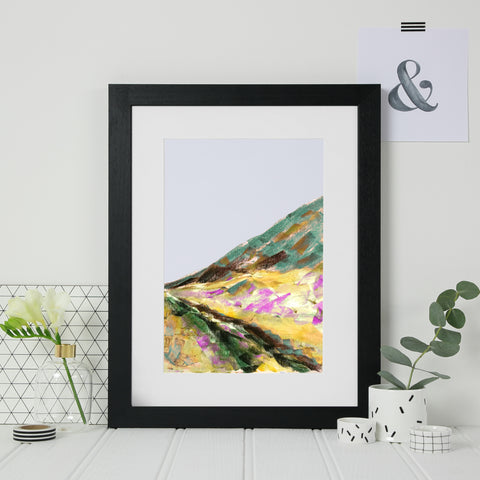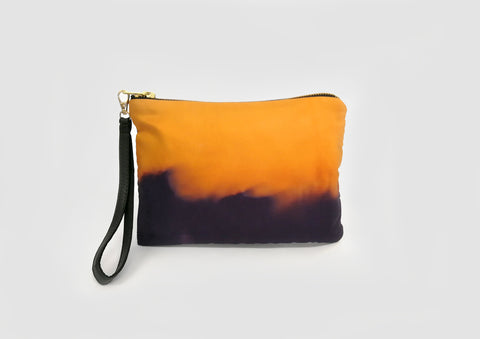To celebrate World Environment Day, I'd like to share with you a new collection I've been working on for the past few months.
Inspired by a recent trip to Scotland, I have been working on some designs which depict the majestic landscape. I have also been developing a design process that uses 100% natural dyes which is really exciting. This cleaner and more environmentally friendly approach came about after I completed a natural dye course earlier this year with textile artist Zoe Burt at Morley College.

Hello from the Scottish Highlands.
The Quiraing in the Isle of Skye, Scotland. I love the craggy silhouette and contrasting shapes.

Photographs from the Scottish Highlands and Isle of Skye.
I was so inspired by the Scottish scenery and I knew I wanted to design a range inspired by the Scottish Highlands but I wasn't sure how to incorporate this into my brand so it would be in keeping with my other collections. I sketched some of the views using chalky pastels, roughly sketching out forms using lines and bold mark-making.

Sketches from Scotland.
Pastel sketch of Carbost, Scotland.
Scottish coastal sketch. I love the organic, dramatic coastline.
Scottish Highlands sketch.
After further research and producing a series of artworks, I wondered if there was a way I could merge my design research with the dyeing process. I love the winding valleys and towering mountains (munros as they're called in Scotland). I looked at various compositions from my photographs and started to link how these shapes could be created through dip-dyeing.


Photographic compositions of the Scottish landscape.

Composition planning.
I started to experiment with hand-dyed silk, playing with dip dyeing and painting, layering up colours and then stripping colour out. This was a fun but very time-consuming process that requires a lot of detailed note-taking and trial and error.

Each column represents one natural colour, and each segment is a variation of the colour by dipping it in various solutions including citrus, soda ash or iron water.

Testing reactions to bicarbonate of soda solution.

Further natural dye tests. Looking at reactions to soda ash, citric acid, iron and tin.

Dyeing silk with avocado seeds and lac and cochineal extracts. I need to keep monitoring the temperature and stirring the fabric to ensure an even coverage.

Bowls of various solutions (citric acid, soda ash and iron) to test reactions with natural dyed fabrics.

More testing...

Studio setting.

In the studio selecting the most effective dip dye experiments.
I started to refine what really worked. Through hours and hours of trial and error (over months), I whittled down my colour palette and found a technique which conveyed my vision of the Scottish Highlands and was in keeping with my design style and was really very beautiful.

This has been a very time consuming and challenging undertaking, but I believe that the makers and brands of today have a responsibility to find ways of making products that are as sustainable as possible, without compromising on style and function. Add to that the extra challenge of creating pieces which are affordable, in the hope to make sustainable products mainstream.
Further reading about natural dyeing:
Botanical Inks, Babs Behan
Wild Color, Jenny Dean
The Science of Teaching with Natural Dyes, Jeanne M Buccigross
I have recently been featured in Crafty Fox's 'Sustainability in Making' blog series. To read the full article, please click here.
Sign up to the newsletter here to hear more from Samantha Warren.









Leave a comment